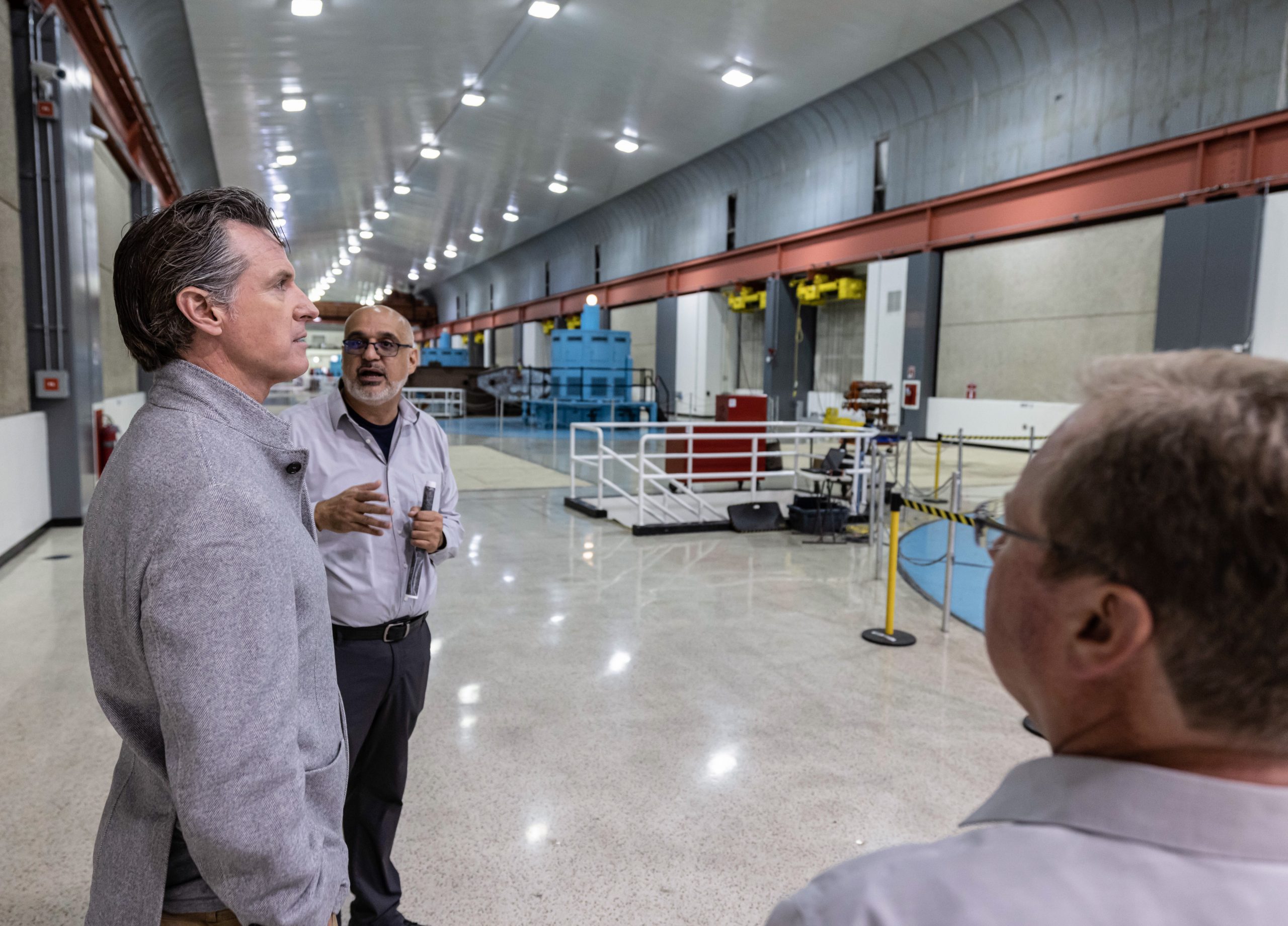Oroville, CA…As Western states continue to experience intensifying drought conditions, Governor Gavin Newsom today visited Lake Oroville to highlight efforts to advance long-term water resilience and bolster the state’s drought response. Though storms returned to Northern California this week, the small amounts of rain and snowfall expected will not make a significant dent in the water deficit the state faces.
Governor Newsom Tours Hyatt Powerplant
“With the climate crisis threatening communities across the West, we must double down on our work to build water resilience in our communities for the long haul,” said Governor Newsom. “All of us must do our part to tackle the intensifying drought conditions felt across the state. We’re investing critical resources to battle the drought’s impacts on our communities and ecosystems and finding innovative solutions to deal with these new realities.”
Dry conditions resulting from extreme weather impact multiple aspects of state operations, including increased fire risk and reduced energy production capacity. Today, the Governor visited Hyatt Powerplant at the Oroville facilities, which produces enough hydroelectric power to supply a city the size of San Francisco. Last year, State Water Project operations managers took the powerplant offline due to falling lake levels, but the facility resumed hydropower operations again in January.
The Governor and the Legislature have invested $5.2 billion over three years to support the immediate drought response and build water resilience statewide, and the Governor is proposing $2 billion to spur clean energy projects across the state and bolster grid reliability. The budget includes funding to secure and expand water supplies; bolster drought contingency planning and multi-benefit land repurposing projects; support drinking water and wastewater infrastructure, with a focus on small and disadvantaged communities; advance Sustainable Groundwater Management Act implementation to improve water supply security and quality; and support wildlife and habitat restoration efforts, among other nature-based solutions.
“As this drought persists into a third year, we are experiencing drier and hotter weather than ever before,” said California Natural Resources Agency Secretary Wade Crowfoot. “These conditions diminish our water supplies but also threaten energy reliability. We are adapting to these unprecedented conditions and working to find flexibilities where possible to safeguard both water supplies and grid reliability.”
“We are now in a third consecutive year of drought, driven by climate change. We’re seeing the realities of our warming climate on our water supply and our power supply as evident by conditions at Lake Oroville,” said California Department of Water Resources Director Karla Nemeth. “The State is taking action to balance the water supply needs of residents, businesses and agriculture, and the environment. We are stepping up our policy efforts and educating the public about the need to make water conservation a way of life to stretch our water supply as much as possible.”
The Governor last week announced the expansion of the state’s Save Our Water campaign to encourage Californians to reduce water use as drought conditions worsen. The campaign rolled out new multilingual ads across several media platforms as part of their ongoing efforts, and briefed more than a dozen influencers and content creators calling on them to support the statewide education campaign. The state has also launched the California WATER WATCH website to inform Californians about hydrological conditions in their own communities and connect residents with local water suppliers to learn about available incentives and rebates that support water-saving upgrades in the home and yard.
Governor Newsom, through an executive order last month, called on local water suppliers to move to, at a minimum, Level Two of their Water Shortage Contingency Plans, which require locally-appropriate actions that will conserve water across all sectors. The Executive Order also directed the State Water Resources Control Board to consider a ban on the watering of decorative grass at businesses and institutions.
In March, the Governor advanced an additional $22.5 million to bolster the state’s drought response. Of this funding, $8.25 million will be used to increase educational and outreach efforts, including through the Save Our Water campaign, which is providing Californians with water-saving tips via social media and other digital advertising. Governor Newsom’s California Blueprint proposal includes $750 million in additional drought funding, $250 million of which was set aside as a drought reserve to be allocated in the spring, based on conditions and need.
In 2020, Governor Newsom released the Water Resilience Portfolio, the Administration’s blueprint for equipping California to cope with more extreme droughts and floods, rising temperatures, declining fish populations, over-reliance on groundwater, and other challenges. The Administration released a progress report in January 2022.
For more tips on saving water, visit www.saveourwater.com. Learn more about current conditions, the state’s response and informational resources available to the public at the state’s drought preparedness website.
###




